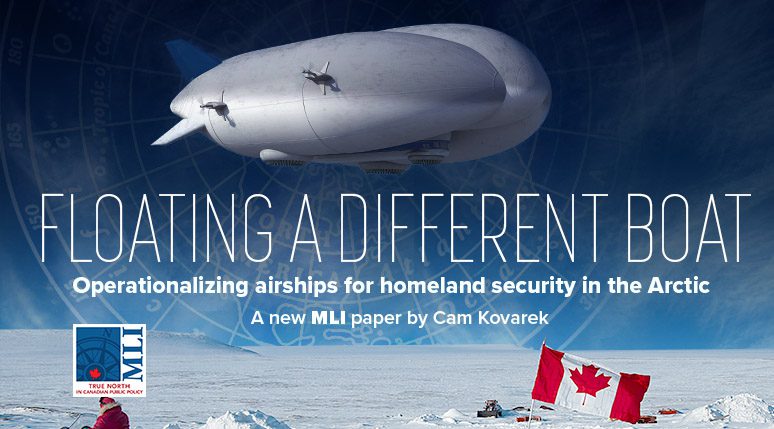OTTAWA, ON (November 27, 2023): In the last decade, Arctic Sea routes have become increasingly attractive for maritime shipping and, consequently, more contested. However, for the United States and Canada, there are considerable challenges in securing the region. A scarcity of icebreakers and deep water port facilities also limit access for military and economic purposes.
In a new paper, Floating a different boat: operationalizing airships for homeland security in the Arctic, LCDR Cam Kovarek argues for the adoption of re-emerging lighter than air (LTA) platforms by the United States and allies to improve their defensive posture in the Arctic.
According to Kovarek, the threat to Arctic security is urgent, with Russian and Chinese naval vessels carrying out incursions into the United States’ exclusive economic zone (EEZ) near Alaska. Posturing from Moscow and Beijing, although not illegal, signals a heightened risk.
“Airships may offer an effective solution to countering maritime threats posed by strategic competitors in the Arctic,” notes Kovarek. “Their inherent capabilities coupled with technological advances of the last half century make airships a viable solution.”
Kovarek explains how modern airships can potentially disrupt the air transport and cargo industries, with designs like the LMH-3, developed under Lockheed Martin; capable of hauling up to 500 tons at a much lower cost than its fixed-wing counterparts. The emergence of an organized effort in Canada, advocating for the use of airships to support mining, is particularly noteworthy.
For Kovarek, many potential applications exist for airship employment by the US Coast Guard and other relevant organizations: by NORAD to support its maritime surveillance missions, by NATO to support air policing missions, as well as in support of assured logistics to current and future military installations.
Disaster response organizations could also benefit, improving emergency preparedness for vulnerable populations in the Arctic, addressing food insecurity, medical access, insufficient housing, and other material shortages related to human security.
Kovarek concludes that LTA platforms have “immediate application toward persistent surveillance and stand to drastically increase maritime domain awareness around Alaskan (and Canadian) littoral waters.”
“Should the United States military decide to operationalize airships, they may yet outmaneuver their strategic competitors with one slow, steady, and lighter-than-air solution.”
To learn more, read the full paper here:







